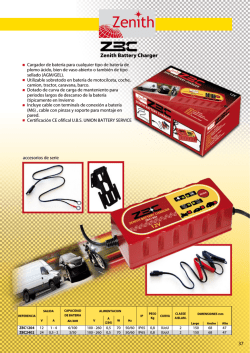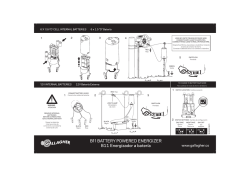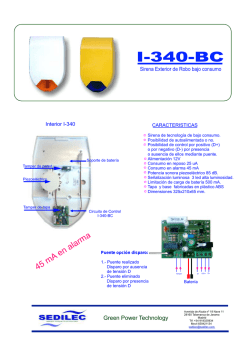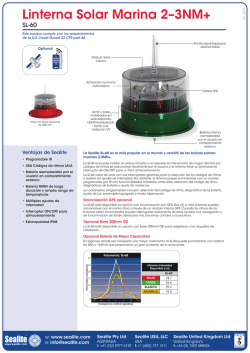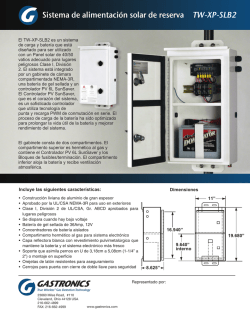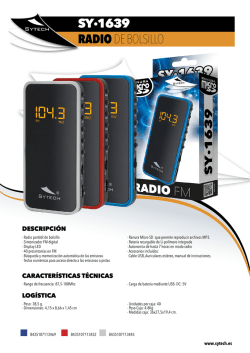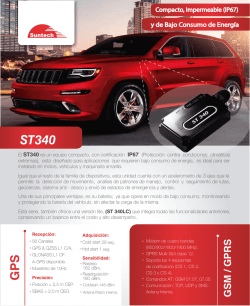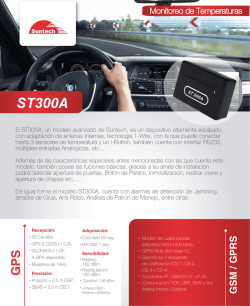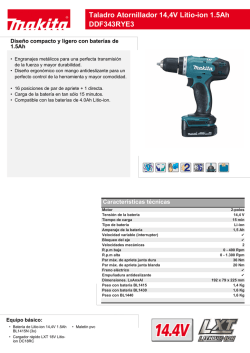
Black Decker Garage Accessories Installation
300 AMP SLIM JUMP-STARTER INSTRUCTION MANUAL Catalog Number JUS300B SAFETY GUIDELINES / DEFINITIONS DANGER: Indicates an imminently hazardous situation which, if not avoided, will result in death or serious injury. WARNING: Indicates a potentially hazardous situation which, if not avoided, could result in death or serious injury. CAUTION: Indicates a potentially hazardous situation which, if not avoided, may result in minor or moderate injury. CAUTION: Used without the safety alert symbol indicates potentially hazardous situation which, if not avoided, may result in property damage. RISK OF UNSAFE OPERATION. When using tools or equipment, basic safety precautions should always be followed to reduce the risk of personal injury. Improper operation, maintenance or modification of tools or equipment could result in serious injury and property damage. There are certain applications for which tools and equipment are designed. Black & Decker strongly recommends that this product NOT be modified and/or used for any application other than for which it was designed. Read and understand all warnings and operating instructions before using any tool or equipment. IMPORTANT SAFETY INSTRUCTIONS GENERAL SAFETY WARNINGS AND INSTRUCTIONS FOR ALL APPLIANCES READ ALL INSTRUCTIONS READ ALL INSTRUCTIONS WARNING: Read all instructions before operating product. Failure to follow all instructions listed below may result in electric shock, fire and/or serious injury. • AVOID DANGEROUS ENVIRONMENTS: Don’t use appliances in damp or wet locations. Don’t use appliances in the rain. • KEEP CHILDREN AWAY. All visitors should be kept at a distance from work area. • STORE IDLE APPLIANCES INDOORS. When not in use, appliances should be stored indoors in dry, and high or locked-up place – out of reach of children. • DON’T FORCE APPLIANCE. It will do the job better and with less likelihood of a risk of injury at the rate for which it was designed. • USE RIGHT APPLIANCE. Do not use the appliance for any job except that for which it is intended. • DRESS PROPERLY. Do not wear loose clothing or jewelry. They can be caught in moving parts. Rubber gloves and substantial, non-skid footwear are recommended when working outdoors. Wear protective hair covering to contain long hair. • USE SAFETY GLASSES AND OTHER SAFETY EQUIPMENT. Use safety goggles or safety glasses with side shields, complying with applicable safety standards and, when needed, a face shield. Also use face or dust mask if operation is dusty. This applies to all persons in the work area. Also use a hard hat, hearing protection, gloves, safety shoes and dust collection systems when specified or required. Safety glasses or the like are available at extra cost at your local dealer or Black & Decker Service Center. • DON’T ABUSE CORD. Never carry appliance by cord or yank it to disconnect from receptacle. Keep cord from heat, oil, and sharp edges. • DON’T OVERREACH. Keep proper footing and balance at all times. • DISCONNECT APPLIANCES. Disconnect the appliance from the power supply when not in use, before servicing, and when changing accessories such as blades and the like. • AVOID UNINTENTIONAL STARTING. Don’t carry plugged-in appliance with finger on switch. Be sure switch is off when plugging in. • GROUND FAULT CIRCUIT INTERRUPTER (GFCI) protection should be provided on the circuits or outlets to be used. Receptacles are available having built in GFCI protection and may be used for this measure of safety. • USE OF ACCESSORIES AND ATTACHMENTS. The use of any accessory or attachment not recommended for use with this appliance could be hazardous. Note: Refer to the accessory section of this manual for further details. • STAY ALERT. Watch what you are doing. Use common sense. Do not operate tool when you are tired. • CHECK DAMAGED PARTS. Before further use of the tool, a guard or other part that is damaged should be carefully checked to determine that it will operate properly and perform its intended function. Check for alignment of moving parts, binding of moving parts, breakage of parts, mounting, and any other conditions that may affect its operation. A guard or other part that is damaged should be properly repaired or replaced by an authorized service center unless otherwise indicated elsewhere in this instruction manual. Have defective switches replaced by authorized service center. Do not use tool if switch does not turn it on and off. • DO NOT OPERATE portable electric tools near flammable liquids or in gaseous or explosive atmospheres. Motors in these tools normally spark, and the sparks might ignite fumes. • OUTDOOR USE EXTENSION CORDS. When tool is used outdoors, use only extension cords intended for use outdoors and so marked. • EXTENSION CORDS. Make sure your extension cord is in good condition. When using an extension cord, be sure to use one heavy enough to carry the current your product will draw. An undersized cord will cause a drop in line voltage resulting in loss of power and overheating. The following table shows the correct size to use depending on cord length and nameplate ampere rating. If in doubt, use the next heavier gage. The smaller the gage number, the heavier the cord. Minimum Gage for Cord Sets Volts Total Length of Cord in Feet 120V 240V Ampere Rating More Not more Than Than 0 6 6 10 10 12 12 16 0-25 26-50 (0-7,6m) (7,6-15,2m) 0-50 51-100 (0-15,2m) (15,2-30,4m) 51-100 (15,2-30,4m) 101-200 (30,4-60,9m) 101-150 (30,4-45,7m) 201-300 (60,9-91,4m) American Wire Gage 18 18 16 14 16 16 16 12 16 14 14 12 14 12 Not Recommended WARNING: This product or its power cord contains lead, a chemical known to the State of California to cause cancer and birth defect or other reproductive harm. Wash hands after handling. WARNING: BURST HAZARD: Do not use the unit for charging dry-cell batteries that are commonly used with home appliances. These batteries may burst and cause injury to persons and damage property. Use the unit for charging/boosting a LEAD-ACID battery only. It is not intended to supply power to a low-voltage electrical system other than in a starter-motor application. WARNING: SHOCK HAZARD: • If an extension cord is used, make sure that: a) the pins of extension cord are the same number, size and shape as those in the charger, b) the extension cord is properly wired and in good electrical condition, c) the wire size is large enough for the AC rating of the charger as indicated in the table on page 1. • Do not operate unit with damaged cord or plug; or if the unit has received a sharp blow, been dropped, or otherwise damaged in any way. Do not disassemble the unit; take it to a qualified service technician when service or repair is required. Incorrect reassembly may result in a risk of electric shock or fire, and will void warranty. • Use of an attachment not supplied, recommended or sold by manufacturer specifically for use with this unit may result in a risk of electrical shock and injury to persons. • NEVER submerge this unit in water; do not expose it to rain, snow or use when wet. • To reduce risk of electric shock, disconnect the unit from any power source before attempting maintenance or cleaning. Turning off controls without disconnecting will not reduce this risk. • Do not insert foreign objects into the USB outlet. WARNING: RISK OF EXPLOSIVE GASES • Working in the vicinity of a lead acid battery is dangerous. Batteries generate explosive gases during normal battery operation. For this reason, it is of the utmost importance that each time before using the jump-starter you read this manual and follow instructions exactly. • To reduce the risk of battery explosion, follow these instructions and those published by the battery manufacturer and manufacturer of any equipment you intend to use in the vicinity of the battery. Review cautionary markings on these products and on the engine. • This equipment employs parts (switches, relays, etc.) that produce arcs or sparks. Therefore, if used in a garage or enclosed area, the unit MUST be placed not less than 18 inches above the floor. • THIS UNIT IS NOT FOR USE BY CHILDREN AND SHOULD ONLY BE OPERATED BY ADULTS. CAUTION: TO REDUCE THE RISK OF INJURY OR PROPERTY DAMAGE: • Pull cord by plug rather than cord when disconnecting the 120V AC Charging Adapter from the unit. • NEVER ATTEMPT TO JUMP-START OR CHARGE A FROZEN BATTERY. • To recharge this unit, use only the supplied AC Charging Adapter. • Vehicles that have on-board computerized systems may be damaged if vehicle battery is jump-started. Before jump-starting, read the vehicle’s owner’s manual to confirm that external-starting assistance is suitable. • When working with lead acid batteries, always make sure immediate assistance is available in case of accident or emergency. • Always have protective eyewear when using this product: contact with battery acid may cause blindness and/or severe burns. Be aware of first aid procedures in case of accidental contact with battery acid. • Have plenty of fresh water and soap nearby in case battery acid contacts skin. • If battery acid contacts skin or clothing, wash immediately with soap and water for at least 10 minutes and get medical attention immediately. • Never smoke or allow a spark or flame in vicinity of vehicle battery, engine or power station • Remove personal metal items such as rings, bracelets, necklaces and watches when working with a lead acid battery. A lead acid battery can produce a short circuit current high enough to weld a ring, or similar metal object, to skin, causing a severe burn. • Do not wear vinyl clothing when jump-starting a vehicle when jump-starting a vehicle, friction can cause dangerous staticelectrical sparks. • Jump-start procedures should only be performed in a safe, dry, well-ventilated area. • Always store battery clamps when not in use. Never touch battery clamps together. This can cause dangerous sparks, power arcing and/or explosion. • When using this unit close to the vehicle’s battery and engine, stand the unit on a flat, stable surface, and be sure to keep all clamps, cords, clothing and body parts away from moving vehicle parts. • Never allow red and black clamps to touch each other or another common metal conductor — this could cause damage to the unit and/or create a sparking/explosion hazard. a) For negative-grounded systems, connect the POSITIVE (RED) clamp to the POSITIVE ungrounded battery post and the NEGATIVE (BLACK) clamp to the vehicle chassis or engine block away from the battery. Do not connect the clamp to the carburetor, fuel lines or sheet-metal body parts. Connect to a heavy gauge metal part of the frame or engine block. Refer to the automobile owner’s manual. b) For positive-grounded systems, connect the NEGATIVE (BLACK) clamp to the NEGATIVE ungrounded battery post and the POSITIVE (RED) clamp to the vehicle chassis or engine block away from the battery. Do not connect the clamp to the carburetor, fuel lines or sheet-metal body parts. Connect to a heavy gauge metal part of the frame or engine block. Refer to the automobile owner’s manual. • If the connections to the battery’s POSITIVE and NEGATIVE terminals are incorrect, the Reverse Polarity Indicator will light (red) and the unit will sound a beep. Disconnect clamps and reconnect to battery with correct polarity. • Always disconnect the negative (Black) jumper cable first, followed by the positive (Red) jumper cable, except for positive grounded systems. • Do not expose battery to fire or intense heat since it may explode. Before disposing of the battery, protect exposed terminals with heavy-duty electrical tape to prevent shorting (shorting can result in injury or fire). • Place this unit as far away from the battery as cables permit. • Never allow battery acid to come in contact with this unit. • Do not operate this unit in a closed area or restrict ventilation in any way. • FIRST AID – SKIN: If battery acid comes in contact with skin, rinse immediately with water, then wash thoroughly with soap and water. If redness, pain, or irritation occurs, seek immediate medical attention. EYES: If battery acid comes in contact with eyes, flush eyes immediately, for a minimum of 15 minutes and seek immediate medical attention. • IMPORTANT: This unit is delivered in a partially charged state. Fully charge unit with a household extension cord (not supplied) for a full 24 hours before using for the first time. You cannot overcharge the unit using the AC charging method. • All ON/OFF switches should be in the OFF position when the unit is charging or not in use. Make sure all switches are in the OFF position before connection to a power source or load. • This system is designed to be used only on vehicles with a 12 volt DC battery system. Do not connect to a 6 volt or 24 volt battery system. • This system is not designed to be used as a replacement for a vehicular battery. Do not attempt to operate a vehicle that does not have a battery installed. • Excessive engine cranking can damage a vehicle’s starter motor. If the engine fails to start after the recommended number of attempts, discontinue jump-start procedures and look for other problems that may need to be corrected. • Do not use this jump-starter on a watercraft. It is not qualified for marine applications. • Although this unit contains a non-spillable battery, it is recommended that unit be kept upright during storage, use and recharging. To avoid possible damage that may shorten the unit’s working life, protect it from direct sunlight, direct heat and/or moisture. • Read And Understand This Instruction Manual Before Using This Unit. SAVE THESE INSTRUCTIONS This device complies with part 15 of the FCC rules. Operation is subject to the following two conditions: (1) This device may not cause harmful interference, and (2) This device must accept any interference received, including interference that may cause undesired operation. This equipment has been tested and found to comply with the limits for a Class B digital device, pursuant to part 15 of the FCC Rules, These limits are designed to provide reasonable protection against harmful interference to radio communications. However, there is not guarantee that interference to radio or television reception, with can be determined by turning the equipment off and on, user is encouraged to try to connect the interference by one or more of the following measures: • Reorient or relocate the receiving antenna. • Increase the separation between equipment and receiver. • Connect equipment into an outlet on a circuit different from that to which the receiver is connected. • Consult the dealer or an experienced radio/TV technician for help. WARNING: TO REDUCE THE RISK OF INJURY: Follow these instructions and those published by the battery manufacturer and manufacturer of any equipment you intend to use with this unit. Review cautionary markings on these products and on engine. Controls and Indicators 3 4 5 6 7 2 8 1 12 11 10 9 1.NEGATIVE (–) BLACK CLAMP 2.POSITIVE (+) RED CLAMP 3.BUILT-IN 120 VOLT AC CHARGER (UNDER PROTECTIVE COVER) 4.LED BATTERY STATUS INDICATORS 5.BUILT-IN LED AREA LIGHT 6.AREA LIGHT POWER SWITCH 7.REVERSE POLARITY INDICATOR 8.JUMP-STARTER POWER SWITCH 9.BATTERY CHARGE LEVEL PUSHBUTTON 10.USB POWER ON INDICATOR 11.USB POWER PORT 12.USB ON/OFF SWITCH CHARGING/RECHARGING This product has a sealed lead acid battery. For maximum battery life, we recommend the Jump-Starter be kept fully charged at all times. Recharge before first use, immediately after each use, and once a month if not used. Failure to do this may reduce the battery life dramatically. To check the battery charge status at any time, press the Battery Charge Level Pushbutton. Note: This unit is delivered in a partially charged state – you must fully charge it before using it for the first time. Initial AC charge should be for 24 hours. Charging/Recharging Using the 120 Volt AC Charger and a Standard Household Extension Cord (not included) 1. Lift the AC adapter cover located on the back of the unit and connect an extension cord to the unit. Plug the other end of the cord into a standard 120 volt AC wall outlet. 2. Charge until three Red and one Green LED Battery Status Indicators light. 3. Once fully charged, disconnect the extension cord. Note: The unit cannot be overcharged using the AC method. INTRODUCTION JUMP-STARTER Thank you for choosing the 300 Amp Jump-Starter. This compact jump-starter is unique in the amount of energy it can supply for its size. The internal battery is a high density sealed, lead-acid battery that stores and delivers energy comparable to full sized ordinary jump-starters. Please read this guide carefully before use to ensure optimum performance and avoid damage to the unit or items that you are using it with. This Jump-Starter is equipped with an ON/OFF Power Switch. Once the connections are properly made, turn the switch ON to jump-start the vehicle. 1. Turn OFF vehicle ignition and all accessories (radio, A/C, lights, connected cell phone chargers, etc.). Place vehicle in “park” and set the emergency brake. 2. Make sure the Jump-Starter Power Switch is turned to OFF. 3. Remove jumper clamps from clamp tabs. Connect the red clamp first, then the black clamp. 4.Procedure for jump-starting a NEGATIVE GROUNDED SYSTEM (negative battery terminal is connected to chassis) (MOST COMMON) 4a. Connect positive (+) red clamp to vehicle battery’s positive terminal. 4b. Connect negative (–) black clamp to chassis or a solid, non-moving, metal vehicle component or body part. Never clamp directly to negative battery terminal or moving part. Refer to the automobile owner’s manual. 5.Procedure for jump-starting POSITIVE GROUND SYSTEMS Note: In the rare event that the vehicle to be started has a Positive Grounded System (positive battery terminal is connected to chassis), replace steps 4a and 4b above with steps 5a and 5b, then proceed to step 6. 5a. Connect negative (–) black clamp to vehicle battery’s negative terminal. 5b. Connect positive (+) red clamp to vehicle chassis or a solid, non-moving, metal vehicle component or body part. Never clamp directly to Positive battery terminal or moving part. Refer to the automobile owner’s manual. 6. When clamps are connected properly, turn the Jump-Starter Power Switch to ON. 7. Turn ON the ignition and crank the engine in 5-6 second bursts until engine starts. 8. Turn the Jump-Starter Power Switch back to the OFF position. 9. Disconnect the negative (–) engine or chassis clamp first, then disconnect the positive (+) battery clamp. FOLLOW ALL SAFETY INSTRUCTIONS FOUND IN THIS MANUAL. The 300 Amp Jump-Starter is a compact, durable, portable jump-start system for vehicles that have a standard 12 volt battery system. This self-contained, rechargeable system will start most vehicles without the need for a host vehicle or 12 volt DC power supply. It can also be used as a portable source of 12 volt DC electric power in remote locations and/or emergency situations. It is ideal for use with 12 volt DC cordless, portable, rechargeable products and DC/AC power inverters. FEATURES • Keyless ON/OFF Power Switch • Cordless/rechargeable • Built-in non-spillable, maintenance-free, heavy duty, sealed, lead-acid battery • Requires no maintenance (other than recharging) for optimum operation • Heavy duty cables and clamps • 5 Volt DC USB Charging Port • Built-in LED Area Light • Reverse polarity connection warning indicator • Exclusive cable storage channels keep jumper cables out of the way until needed • Built-in 120 Volt AC Charger (uses a standard extension cord, not included) • Easy-to-read LED battery charge status indicators CAUTIONS: RISK OF PROPERTY DAMAGE • If the connections to the battery’s positive and negative terminals are incorrect, the Reverse Polarity Indicator will light (red) and the unit will sound a beep. Disconnect clamps and reconnect to battery with correct polarity. • If vehicle fails to start, turn OFF the ignition, turn OFF the Jump-Starter Power Switch, disconnect the jump-start system’s leads and contact a qualified technician to investigate why the engine did not start. • Recharge this unit fully after each use. WARNINGS • Jump-Starter Power Switch should be off prior to jump-starting. • This power system is to be used ONLY on vehicles with 12 volt DC battery systems. • Never touch red and black clamps together — this can cause dangerous sparks, power arcing, and/or explosion. • Vehicles that have on-board computerized systems may be damaged if vehicle battery is jump-started. Before jump-starting this type of vehicle, read the vehicle manual to confirm that external-starting assistance is advised. • Excessive engine cranking can damage the vehicle‘s starter motor. If the engine fails to start after the recommended number of attempts, discontinue jump-start procedure and look for other problems that need to be corrected. • After use, turn the Jump-Starter Power Switch OFF. USB POWER PORT 1. Push the USB Power Port On Pushbutton to turn the USB Port ON. 2. Plug the USB-powered device into the inverter’s USB Charging Port and operate normally. Notes: This inverter’s USB Power Port does not support data communication. It only provides 5 volts/300mA DC power to an external USB-powered device. Make sure the USB Charging Port ON/OFF Pushbutton is in the OFF position when the unit is being recharged or stored. Some household USB-powered electronics will not operate with this unit. EMERGENCY AREA LIGHT The area light is controlled by the Area Light Power Switch on the front panel of the unit. Make sure the lamp is turned OFF when the unit is being recharged or stored. WARNINGS Do not dispose of this unit in fire as batteries inside this product may explode or leak. Do not expose the unit containing a battery to fire or intense heat as it may explode. Before disposing of the battery, protect exposed terminals with heavy-duty electrical tape to prevent shorting (shorting can result in injury or fire). FULL TWO-YEAR HOME USE WARRANTY Black & Decker (U.S.) Inc. warrants this product for two years against any defects in material or workmanship. The defective product will be replaced or repaired at no charge in either of two ways. The first, which will result in exchanges only, is to return the product to the retailer from whom it was purchased (provided that the store is a participating retailer). Returns should be made within the time period of the retailer’s policy for exchanges (usually 30 to 90 days after the sale). Proof of purchase may be required. Please check with the retailer for their specific return policy regarding returns that are beyond the time set for exchanges. SPECIFICATIONS Boost Ampere: Battery Type: Area Light: USB Charging Port Output: Booster Cables: Accessory Outlet: 300 instantaneous cranking amps Sealed, high energy density, AGM, lead-acid, rechargeable, maintenance-free, 12 volt DC Light Emitting Diode (LED) 5 volts DC 500 mA #5 AWG cables with 300 Amps heavy duty clamps Self-resetting breaker 5 amps MANUAL DE INSTRUCCIONES DEL PUENTE AUXILIAR DE ARRANQUE CON INFLADOR DE 300 AMPERIOS Número de catálogo JUS300B NORMAS DE SEGURIDAD/DEFINICIONES PELIGRO: Indica una situación de peligro inminente que, si no se evita, provocará la muerte o lesiones graves. ADVERTENCIA: Indica una situación de peligro potencial que, si no se evita, podría provocar la muerte o lesiones graves. PRECAUCIÓN: Indica una situación de peligro potencial que, si no se evita, puede provocar lesiones leves o moderadas. PRECAUCIÓN: Utilizado sin el símbolo de alerta de seguridad indica una situación de peligro potencial que, si no se evita, puede provocar daños en la propiedad. RIESGO DE OPERACIÓN INSEGURA. Cuando se utilizan herramientas o equipos, siempre se deben respetar las precauciones de seguridad para reducir el riesgo de lesiones personales. La operación, la modificación o el mantenimiento incorrectos de herramientas o equipos pueden provocar lesiones graves y daños a la propiedad. Las herramientas y los equipos están diseñados para determinados usos. Black & Decker recomienda enfáticamente que NO se modifique este producto y que NO se utilice para ningún otro uso que aquél para el que fue diseñado. Lea y comprenda todas las instrucciones operativas y las advertencias antes de utilizar cualquier herramienta o equipo. INSTRUCCIONES IMPORTANTES SOBRE SEGURIDAD INSTRUCCIONES Y ADVERTENCIAS DE SEGURIDAD GENERALES PARA TODOS LOS ARTEFACTOS LEA TODAS LAS INSTRUCCIONES ADVERTENCIA: Lea todas las instrucciones antes de hacer funcionar el producto. El incumplimiento de todas las instrucciones enumeradas a continuación puede provocar una descarga eléctrica, un incendio o lgraves. • EVITE LAS CONDICIONES AMBIENTALES PELIGROSAS. No utilice artefactos en zonas húmedas o mojadas. No utilice artefactos bajo la lluvia. • MANTENGA A LOS NIÑOS ALEJADOS. Los visitantes deben mantenerse a cierta distancia del área de trabajo. • GUARDE LOS ARTEFACTOS QUE NO UTILICE EN EL INTERIOR. Cuando no los utilice, los artefactos deben guardarse bajo techo, en un lugar seco, alto o bajo llave, lejos del alcance de los niños. • NO FUERCE EL APARATO. Funcionará mejor y con menos probabilidades de daños si se opera a la velocidad para la que fue diseñado. • UTILICE EL APARATO ADECUADO. Nunca utilice el aparato para otra tarea que no sea aquella para la que fue creado. • USE LA VESTIMENTA ADECUADA. No use ropas holgadas o joyas. Pueden atascarse en las piezas en movimiento. Se recomienda utilizar guantes de goma y calzado antideslizante considerable al trabajar al aire libre. Recójase y cubra el cabello largo. • USE ANTEOJOS DE SEGURIDAD Y CUALQUIER OTRO EQUIPO DE SEGURIDAD. Use anteojos protectores o lentes de seguridad con protección lateral que cumplan con las normas de seguridad aplicables y, de ser necesario, un protector facial. Utilice también máscaras faciales o para polvo si la operación produce polvillo. Esto se aplica a todas las personas que se encuentren en el área de trabajo. Utilice también un casco, protección auditiva, guantes, calzado de seguridad y sistemas de recolección de polvo cuando así se especifique o requiera. Puede conseguir anteojos de seguridad o similares a un costo adicional en su distribuidor local o Centro de mantenimiento de Black & Decker más cercano. • NO TIRE DEL CABLE. Nunca transporte el aparato por el cable ni lo jale para desconectarlo del tomacorriente. Mantenga el cable alejado del calor, el aceite y los bordes afilados. • NO SE ESTIRE. Conserve el equilibrio y párese adecuadamente en todo momento. • DESCONECTE LOS APARATOS. Desconecte el aparato de la fuente de energía cuando no lo utilice, antes de realizar un mantenimiento y al cambiar accesorios como hojas y elementos semejantes. • EVITE EL ENCENDIDO POR ACCIDENTE. No transporte el aparato enchufado con el dedo en el interruptor. Asegúrese de que el interruptor esté apagado cuando lo enchufe. • LA PROTECCIÓN DEL INTERRUPTOR DE CORTE POR FALLA A TIERRA (GFCI) debe aplicarse a los circuitos o los tomacorrientes que se utilizarán. Hay tomacorrientes con protección GFCI incorporada que pueden utilizarse para tomar esta medida de seguridad. • USO DE SUPLEMENTOS Y ACCESORIOS. El uso de accesorios o dispositivos no recomendados para utilizar con este aparato puede resultar peligroso. Nota: Consulte la sección "Accesorios" de este manual para obtener detalles adicionales. • MANTÉNGASE ALERTA. Fíjese en lo que está haciendo. Use el sentido común. No opere la herramienta si está cansado. • VERIFIQUE QUE NO HAYA PIEZAS DAÑADAS. Antes de volver a utilizar la herramienta, se debe controlar cualquier protección u otra pieza que esté averiada para determinar si funcionará correctamente y realizará la función para la que fue diseñada. Verifique la alineación y la sujeción de las piezas móviles, la rotura de piezas, el montaje y cualquier otra condición que pueda afectar su operación. Cualquier protección u otra pieza que esté dañada debe ser reparada correctamente o reemplazada por un centro de mantenimiento autorizado, a menos que este manual de instrucciones indique otra cosa. Reemplace los interruptores defectuosos en un centro de mantenimiento autorizado. No utilice la herramienta si no puede encenderla o apagarla con el interruptor. • NO OPERE herramientas eléctricas portátiles cerca de líquidos inflamables o en atmósferas gaseosas o explosivas. Los motores de estas herramientas normalmente chispean, y las chispas pueden encender los vapores. • EN ESPACIOS ABIERTOS, USE CABLES PROLONGADORES. Cuando opere la herramienta al aire libre, utilice solamente cables prolongadores diseñados para su uso al aire libre o marcados como tales. • CABLES PROLONGADORES. Asegúrese de que el cable prolongador esté en buenas condiciones. Cuando utilice un cable prolongador, cerciórese de que tenga la capacidad para conducir la corriente que su producto exige. Un cable de menor capacidad provocará una disminución en el voltaje de la línea, lo cual producirá una pérdida de potencia y sobrecalentamiento. La siguiente tabla muestra la medida correcta que debe utilizar según la longitud del cable y la capacidad nominal en amperios indicada en la placa. En caso de duda, utilice el calibre inmediatamente superior. Cuanto menor es el número de calibre, más grueso es el cable. Calibre mínimo para los juegos de cables Longitud total del cable en pies 0-25 26-50 51-100 101-150 (0-7,6m) (7,6-15,2m) (15,2-30,4m) (30,4-45,7m) 240V 0-50 51-100 101-200 201-300 (0-15,2m) (15,2-30,4m) (30,4-60,9m) (60,9-91,4m) Capacidad nominal en amperios Más No mas Medida de conductor estadounidense que que 0 6 18 16 16 14 6 10 18 16 14 12 10 12 16 16 14 12 12 16 14 12 No recomendado Voltios 120V ADVERTENCIA: Este producto o su cable de alimentación contiene plomo, una sustancia química reconocida por el Estado de California como causante de cáncer, defectos de nacimiento u otros problemas reproductivos. Lávese las manos después de utilizarlo. ADVERTENCIA, PELIGRO DE ESTALLIDO: No utilice la unidad para cargar las baterías secas que se usan normalmente con los aparatos domésticos. Estas baterías pueden estallar y provocar lesiones a las personas y daños a la propiedad. Use la unidad para carga/ refuerzo solamente de una batería de PLOMO-ÁCIDO. No está diseñada para proveer energía a un sistema eléctrico de bajo voltaje que no sea para arrancar un motor. ADVERTENCIA: RIESGO DE DESCARGA ELÉCTRICA: • Si es necesario utilizar un cable prolongador, asegúrese de que: a) las patas del cable prolongador sean del mismo número, el mismo tamaño y la misma forma que las del cargador, b) el cable prolongador posea los conductores correctos y esté en buenas condiciones eléctricas, c) la medida del conductor sea suficientemente grande para la capacidad nominal en amperios como lo indicado en la tabla arriba. • No opere la unidad con un cable o enchufe dañados, o si ésta ha recibido un golpe fuerte, se cayó o presenta algún daño. No desarme la unidad; llévela a un técnico de servicio calificado cuando se requiera mantenimiento o una reparación. Volver a armarla de manera incorrecta podría provocar un riesgo de descarga eléctrica o un incendio, y anulará la garantía. • El uso de un dispositivo no suministrado, recomendado o vendido por el fabricante específicamente para el uso con esta unidad puede provocar riesgo de descarga eléctrica y lesiones a las personas. • NUNCA sumerja esta unidad en agua; no la exponga a la lluvia, la nieve, ni la use cuando esté mojada. • Para reducir el riesgo de descarga eléctrica, desconecte la unidad de cualquier fuente de energía antes de intentar limpiarla o realizarle un mantenimiento. Apagar los controles sin desenchufar la unidad no reducirá este riesgo. • No inserte objetos extraños en el puerto USB. ADVERTENCIA: RIESGO DE GASES EXPLOSIVOS • Trabajar cerca de una batería de plomo ácido es peligroso. Las baterías generan gases explosivos durante su funcionamiento normal. Por esta razón, es muy importante que siempre lea este manual antes de utilizar el puente auxiliar de arranque y que siga las instrucciones con exactitud. • Para reducir el riesgo de explosión de la batería, siga estas instrucciones y las publicadas por el fabricante de la batería y el fabricante de cualquier equipo que tenga la intención de utilizar cerca de la batería. Revise las indicaciones sobre precauciones en estos productos y en el motor. • Este equipo emplea piezas (interruptores y relés) que producen arcos o chispas. Por lo tanto, si utiliza la unidad en una cochera o un área cerrada, DEBE colocarla a no menos de 457 mm (18 pulgadas) por encima del piso. • LOS NIÑOS NO DEBEN UTILIZAR ESTA UNIDAD. SÓLO LOS ADULTOS PUEDEN OPERARLA. PRECAUCIÓN: PARA REDUCIR EL RIESGO DE LESIONES O DAÑO A LA PROPIEDAD: • Cuando desconecte el adaptador de carga de CA de 120 V de la unidad, tire el cable por el enchufe y no por el cable. • NUNCA INTENTE ARRANCAR MEDIANTE PUENTE NI CARGAR UNA BATERÍA CONGELADA. • Para recargar esta unidad, utilice solamente el adaptador de carga de CA que se suministra. • Los vehículos que tienen sistemas computarizados incorporados pueden resultar dañados si la batería del vehículo se arranca mediante puente. Antes de arrancar mediante puente, lea el manual del cliente del vehículo para confirmar que la ayuda externa para arrancar es adecuada. • Cuando trabaje con baterías de plomo-ácido, asegúrese de que siempre haya ayuda inmediata disponible en caso de accidente o emergencia. • Utilice siempre protección para los ojos al emplear este producto; el contacto con el ácido de la batería puede producir ceguera o quemaduras graves. Conozca los procedimientos de primeros auxilios para el caso de contacto accidental con el ácido de la batería. • Tenga al alcance mucha agua potable y jabón en el caso de que el ácido de la batería entre en contacto con la piel. • Si el ácido de la batería entra en contacto con la piel o la ropa, lave inmediatamente con agua y jabón durante al menos 10 minutos y busque atención médica de inmediato. • Nunca fume o permita que haya una chispa o llama cerca de la batería, el motor o la central de energía. • Quítese los elementos personales metálicos, como anillos, pulseras, collares y relojes cuando trabaja con una batería de plomo-ácido. Una batería de plomo-ácido puede producir un cortocircuito con bastante corriente como para soldar un anillo u objeto metálico similar a la piel y provocar una quemadura grave. • No use ropa de vinilo cuando arranque un vehículo mediante puente; la fricción puede provocar chispas peligrosas a causa de la electricidad estática. • Los procedimientos de arranque mediante puente sólo se deben realizar en un área segura, seca y bien ventilada. • Almacene siempre las pinzas de la batería cuando no se usa. Nunca toque las pinzas de la batería entre sí. Esto puede generar chispas peligrosas, arcos eléctricos o explosión. • Cuando use esta unidad cerca de la batería y el motor del vehículo, coloque la unidad sobre una superficie plana y estable, y asegúrese de mantener todas las pinzas, los cables, la ropa y las partes del cuerpo alejados de los elementos móviles del vehículo. • Nunca deje que las pinzas roja y negra se toquen entre sí o con otro conductor metálico común, esto podría provocar daños a la unidad o crear un riesgo de chispas/explosión. a) Para los sistemas con negativo a tierra, conecte la pinza del POSITIVO (ROJA) al borne sin conexión a tierra de la batería y la pinza del NEGATIVO (NEGRA) al bastidor del vehículo o al bloque del motor, lejos de la batería. No conecte la pinza al carburador, las cañerías de combustible o a las piezas de chapa de la carrocería. Conecte a una pieza de metal sólida del bastidor o del bloque del motor. Refiera al manual del dueño del automóvil. b) Para los sistemas con positivo a tierra, conecte la pinza del NEGATIVO (NEGRA) al borne sin conexión a tierra NEGATIVO de la batería y la pinza del POSITIVO (ROJA) al bastidor del vehículo o al bloque del motor, lejos de la batería. No conecte la pinza al carburador, las cañerías de combustible o a las piezas de chapa de la carrocería. Conecte a una pieza de metal sólida del bastidor o del bloque del motor. Refiera al manual del dueño del automóvil. • Si las conexiones a los terminales POSITIVO y NEGATIVO son incorrectas, el indicador de polaridad invertida se encenderá (de color rojo) y la unidad emitirá un sonido. Desconecte las pinzas y vuelva a conectarlas a la batería con la polaridad correcta. • Siempre desconecte primero el cable del puente del negativo (negro) y luego el cable del puente del positivo (rojo), excepto para los sistemas con positivo a tierra. • No exponga la batería al fuego o a un calor intenso, porque puede explotar. Antes de eliminar la batería, proteja los terminales expuestos con cinta aislante para trabajo pesado para evitar cortocircuitos (un cortocircuito puede producir lesiones o incendio). • Coloque esta unidad lo más lejos posible de la batería que los cables permitan. • Nunca permita que el ácido de la batería entre en contacto con esta unidad. • No opere esta unidad en un área cerrada ni restrinja la ventilación de alguna forma. • PRIMEROS AUXILIOS – PIEL: Si el ácido de la batería entra en contacto con la piel, enjuáguese inmediatamente con agua, luego lávese con agua y jabón. Si se presenta enrojecimiento, dolor o irritación, busque asistencia médica de inmediato. OJOS: Si el ácido de la batería entra en contacto con los ojos, lávese los ojos inmediatamente durante 15 minutos como mínimo y busque asistencia médica de inmediato. • IMPORTANTE: Esta unidad se entrega en un estado de carga parcial. Cargue la unidad completamente con el cable prolongador para uso doméstico (no incluido) durante 24 horas antes de utilizarla por primera vez. No puede sobrecargar la unidad utilizando el método de carga de CA. • Todos los interruptores de ENCENDIDO/APAGADO (ON/OFF) deben estar en la posición de apagado (OFF) cuando se carga la unidad o cuando no está en uso. Asegúrese de que todos los interruptores estén en la posición de apagado (OFF) antes de realizar la conexión a una fuente de energía o carga. • Este sistema está diseñado para ser utilizado únicamente en vehículos con sistema de batería de CC de 12 voltios. No lo conecte a un sistema de batería de 6 o 24 voltios. • Este sistema no está diseñado para ser utilizado en reemplazo de una batería de vehículo. No intente hacer funcionar un vehículo que no tenga la batería instalada. • El exceso de revoluciones del motor puede dañar el mecanismo de arranque de un vehículo. Si el motor no arranca después de la cantidad recomendada de intentos, abandone los procedimientos de arranque mediante puente y busque otros problemas que deban solucionarse. • No utilice este puente auxiliar de arranque en una moto de agua. No fue diseñado para prácticas marinas. • Si bien esta unidad contiene una batería que no derrama, se recomienda que la unidad se conserve parada durante el almacenamiento, el uso y la recarga. Para evitar daños posibles que puedan acortar la duración de la unidad, protéjala de la luz solar directa, el calor directo o la humedad. • Lea y comprenda este manual de instrucciones antes de utilizar esta unidad. CONSERVE ESTAS INSTRUCCIONES Este dispositivo cumple con la parte 15 de las normas de la Comisión Federal de Comunicaciones de Estados Unidos (FCC). La operación está sujeta a las dos condiciones siguientes: (1) este dispositivo no puede causar interferencia perjudicial y (2) este mecanismo debe aceptar cualquier interferencia recibida, incluida la interferencia que puede provocar una operación no deseada. Este equipo ha sido probado y se encontró que cumple con los límites para dispositivo digital Clase B, según la parte 15 de las normas de la FCC. Estos límites están diseñados para brindar protección razonable contra interferencia perjudicial en una instalación residencial. Este equipo genera, usa y puede irradiar energía en frecuencia de radio y, si no se instala y se usa de acuerdo con las instrucciones, puede provocar interferencia perjudicial en las comunicaciones de radio. Sin embargo, no hay garantía de que la interferencia no ocurra en una instalación en particular. Si el equipo provoca interferencia perjudicial en la recepción de radio o televisión, lo que se puede determinar al apagar y encender el equipo, el usuario debe tratar de corregir la interferencia mediante una o más de las siguientes medidas: • Cambiar la orientación o la ubicación de la antena de recepción. • Aumentar la separación entre el equipo y el receptor. • Conectar el equipo a un tomacorriente sobre un circuito diferente de aquel al que está conectado el receptor. • Consultar al vendedor o pedir la ayuda de un técnico en radio y televisión con experiencia. ADVERTENCIA: PARA REDUCIR EL RIESGO DE LESIONES: Siga estas instrucciones y las publicadas por el fabricante de la batería y el fabricante de cualquier equipo que tenga la intención de utilizar con esta unidad. Revise las indicaciones sobre precauciones en estos productos y en el motor. INTRODUCCIÓN Gracias por elegir el puente auxiliar de arranque con inflador. Este puente auxiliar de arranque de tamaño compacto es único por la cantidad de energía que puede suministrar con relación a su tamaño. La batería interna es una batería de plomo-ácido sellada de alta densidad que almacena y suministra energía comparable a un puente auxiliar de arranque común de tamaño normal. Lea esta guía cuidadosamente antes de usar la unidad para asegurarse el rendimiento óptimo de ésta y evitar daños a la unidad o a los artículos con los cuales la está usando. El puente auxiliar de arranque con inflador es un sistema de arranque portátil, durable, de tamaño compacto para vehículos que tienen un sistema de batería estándar de 12 voltios. Este sistema recargable autónomo arrancará la mayoría de los vehículos sin necesidad de otro vehículo o el suministro de energía de 12 voltios de CC. También se puede utilizar como una fuente portátil de energía eléctrica de 12 voltios de CC en lugares remotos o situaciones de emergencia. Es ideal para usar con productos recargables portátiles inalámbricos de 12 voltios de CC y con transformadores eléctricos de CC/CA. CARACTERÍSTICAS • Interruptor de encendido/apagado (ON/OFF) de energía sin llave • Inalámbrico/recargable • Batería de plomo-ácido incorporada, sellada, para trabajo pesado, que no derrama y no requiere mantenimiento • No requiere mantenimiento (salvo recargarlo) para un funcionamiento óptimo • Cables y abrazaderas para trabajo pesado • Puerto de energía USB de CC de 5 voltios • Luz zonal del LED incorporada • Compresor portátil incorporado para neumáticos de vehículos, remolques y artículos inflables para recreación • Indicador de advertencia de conexión de polaridad inversa • Canales exclusivos para guardar los cables que mantienen los cables del puente fuera del camino hasta que son necesarios • Cargador de CA de 120 voltios incorporado (utiliza un cable prolongador estándar, no incluido) • Indicadores de carga de la batería fáciles de leer Controles e indicadores 3 4 5 6 7 2 8 1 12 11 10 9 1.PINZA NEGRA DEL NEGATIVO (–) 2.PINZA ROJA DEL POSITIVO (+) 3.CARGADOR DE CA DE 120 VOLTIOS INCORPORADO (BAJO CUBIERTA PROTECTORA) 4.INDICADORES DE DIODO EMISOR DE LUZ (LED) DE ESTADO DE LA BATERÍA 5.LUZ ZONAL DE LED INCORPORADA 6.INTERRUPTOR DE ENCENDIDO DE LA LUZ ZONAL 7.INDICADOR DE POLARIDAD INVERSA 8.INTERRUPTOR DE ENCENDIDO DEL PUENTE AUXILIAR DE ARRANQUE 9.BOTÓN DEL NIVEL DE CARGA DE LA BATERÍA 10.INDICADOR DE LA ENERGÍA ENCENDIDO DEL PUERTO DE ENERGÍA USB 11.PUERTO DE ENERGÍA USB 12.INTERRUPTOR DE ENCENDIDO DEL PUERTO DE ENERGÍA USB AL CARGAR/RECARGAR Este producto tiene una batería de plomo-ácido sellada que se debe mantener completamente cargada. Recargue antes del primer uso, inmediatamente después de cada uso, y una vez al mes si no se usa. Si esto no se cumple la duración de la batería se reduce de manera muy importante. Nota: Esta unidad se entrega parcialmente cargada, usted debe cargarla completamente antes de usarla por primera vez. La carga inicial de CA debe ser de 24 horas. Para una duración máxima de la batería, recomendamos que el puente auxiliar de arranque se mantenga completamente cargado en todo momento. Si se permite que la batería permanezca descargada, se acortará su duración. Nota: Recargar la batería luego de cada uso prolongará la vida útil de la batería; las descargas importantes frecuentes entre recargas o la sobrecarga reducirán la duración de la batería. Carga/recarga con el cargador de CA de 120 voltios y un cable prolongador estándar para uso doméstico (no incluido) 1. Levante la cubierta del adaptador de CA ubicado en la parte posterior de la unidad y conecte un cable prolongador a la unidad. Enchufe el otro extremo del cable al tomacorriente de pared estándar de CA de 120 voltios. 2. Cargue hasta que se enciendan tres indicadores LED de estado de la batería de color rojo y uno de color verde. 3. Una vez que esté completamente cargada, desconecte el cable prolongador. Nota: La unidad no se puede sobrecargar si se utiliza el método de CA. PUENTE AUXILIAR DE ARRANQUE GARANTÍA COMPLETA DE DOS AÑOS PARA USO EN EL HOGAR El puente auxiliar de arranque está equipado con un interruptor de encendido apagado (ON/OFF). Una vez que las conexiones están hechas correctamente, encienda el interruptor para arrancar el vehículo mediante puente. 1. Apague la ignición del vehículo y todos los accesorios (radio, aire acondicionado, luces, cargadores de teléfono celular conectados, etc.). Ubique el vehículo en "estacionar" y coloque el freno de emergencia. 2. Asegúrese de que el interruptor de encendido del puente auxiliar de arranque esté apagado (OFF). 3. Retire las pinzas del puente de sus respectivas lengüetas. Conecte primero la pinza roja, luego la pinza negra. 4.Procedimiento para arrancar mediante puente un SISTEMA CON NEGATIVO A TIERRA (el terminal de la batería está conectado al bastidor) (LO MÁS COMÚN). 4a. Conecte la pinza roja del positivo (+) al terminal del positivo de la batería del vehículo. 4b. Conecte la pinza negra del negativo (-) al bastidor o a un componente metálico no móvil y sólido, o una parte de la carrocería. Nunca fije la pinza directamente al terminal del negativo de la batería o a una pieza móvil. Refiera al manual del dueño del automóvil. 5.Procedimiento para arrancar SISTEMAS CON POSITIVO A TIERRA. Nota: En el caso poco habitual de que el vehículo que se debe arrancar tenga un sistema de positivo a tierra (el terminal positivo de la batería está conectado al bastidor), reemplace los pasos 4a y 4b anteriores con los pasos 5a y 5b, luego continúe con el paso 6. 5a. Conecte la pinza negra del negativo (-) al terminal del negativo de la batería del vehículo. 5b. Conecte la pinza roja del positivo (+) al bastidor del vehículo o a un componente metálico no móvil y sólido, o una parte de la carrocería. Nunca fije la pinza directamente al terminal del positivo de la batería o a una pieza móvil. Refiera al manual del dueño del automóvil. 6. Cuando las pinzas estén correctamente conectadas, encienda el interruptor de encendido del puente auxiliar de arranque. 7. Encienda la ignición y acelere el motor en etapas de 5 a 6 segundos hasta que arranque. 8. Coloque el interruptor de encendido del puente auxiliar de arranque en la posición de apagado (OFF) nuevamente. 9. Desconecte la pinza del negativo (-) del motor o bastidor primero y luego desconecte la pinza del positivo (+) de la batería. LEA Y SIGA TODAS LAS INSTRUCCIONES DE SEGURIDAD DE ESTE MANUAL. PRECAUCIÓN: RIESGO DE DAÑO A LA PROPIEDADE • Si las conexiones a los terminales POSITIVO y NEGATIVO son incorrectas, el indicador de polaridad invertida se encenderá (de color rojo) y la unidad emitirá un sonido. Desconecte las pinzas y vuelva a conectarlas a la batería con la polaridad correcta. • Si no es posible arrancar el vehículo, apague la ignición, coloque el interruptor de encendido del puente auxiliar de arranque en la posición de apagado (OFF), desconecte los conductores del puente auxiliar de arranque y comuníquese con un técnico calificado para investigar por qué no arrancó el motor. • Vuelva a cargar la unidad completamente después de cada uso. ADVERTENCIAS • Antes de comenzar a arrancar mediante puente, debe apagar el interruptor de encendido del puente auxiliar. • Este sistema está diseñado para utilizarse EXCLUSIVAMENTE en vehículos con sistemas de batería de 12 voltios de CC. • Nunca toque entre sí las pinzas roja y negra de la batería: esto puede provocar chispas peligrosas, arco eléctrico o explosión. • Los vehículos que tienen sistemas computarizados incorporados pueden resultar dañados si la batería del vehículo se arranca mediante puente. Antes de arrancar mediante puente este tipo de vehículo, lea el manual del vehículo para confirmar que se aconseja ayuda externa para arrancar. • El exceso de revoluciones del motor puede dañar el mecanismo de arranque del vehículo. Si el motor no arranca después de la cantidad recomendada de intentos, abandone el procedimiento de arranque mediante puente y busque otros problemas que puedan ser solucionados. • Después de cada uso, apague el interruptor de encendido del puente auxiliar de arranque. Black & Decker (Estados Unidos) Inc. ofrece una garantía de dos años por cualquier defecto del material o de fabricación de este producto. El producto defectuoso se reparará o reemplazará sin costo alguno de dos maneras. La primera opción, el reemplazo, es devolver el producto al comercio donde se lo adquirió (siempre y cuando se trate de un comercio participante). Las devoluciones deben realizarse conforme a la política de devolución del comercio (generalmente, entre 30 y 90 días posteriores a la venta). Le pueden solicitar comprobante de compra. Consulte en el comercio acerca de la política especial sobre devoluciones una vez excedido el plazo establecido. ESPECIFICACIONES Amperios de impulso: 300 amperios instantáneos de giro Tipo de batería: Sellada, alta densidad de energía, placas de vidrio absorbente (AGM), plomo-ácido, recargable, no requiere mantenimiento, 12 voltios de CC Luz zonal: Diodo emisor de luz (LED) Cables para puente: Cables n.º 5 AWG con pinzas de 300 amperios para trabajo pesado Tomacorriente para accesorios: Interruptor automático de 5 amperios, de autorreposición USO DEL PUERTO DE CARGA USB 1. Presione el botón de ENCENDIDO/APAGADO del puerto de carga USB para encender el ppositivo eléctrico USB en uno de los puertos de energía USB y utilícelo normalmente. Notas: Los puertos de carga USB de esta unidad NO admiten comunicación de datos. Sólo proporcionan un máximo de energía de 5 voltios de CC/300 mA a un dispositivo eléctrico USB externo. Asegúrese de que el botón de ENCENDIDO/APAGADO esté en la posición de APAGADO cuando se recargue o almacene la unidad. Una cierta electrónica USB-accionada hogar no funcionará con esta unidad. LUZ ZONAL DEL LED La luz zonal se controla mediante el interruptor de la luz zonal ubicado en el panel frontal de la unidad. Asegúrese de que la lámpara esté apagada (OFF) cuando se recarga o se almacena la unidad. BLACK DECKER ACCESSORIES GARAGE ACCESSORIES
© Copyright 2025
